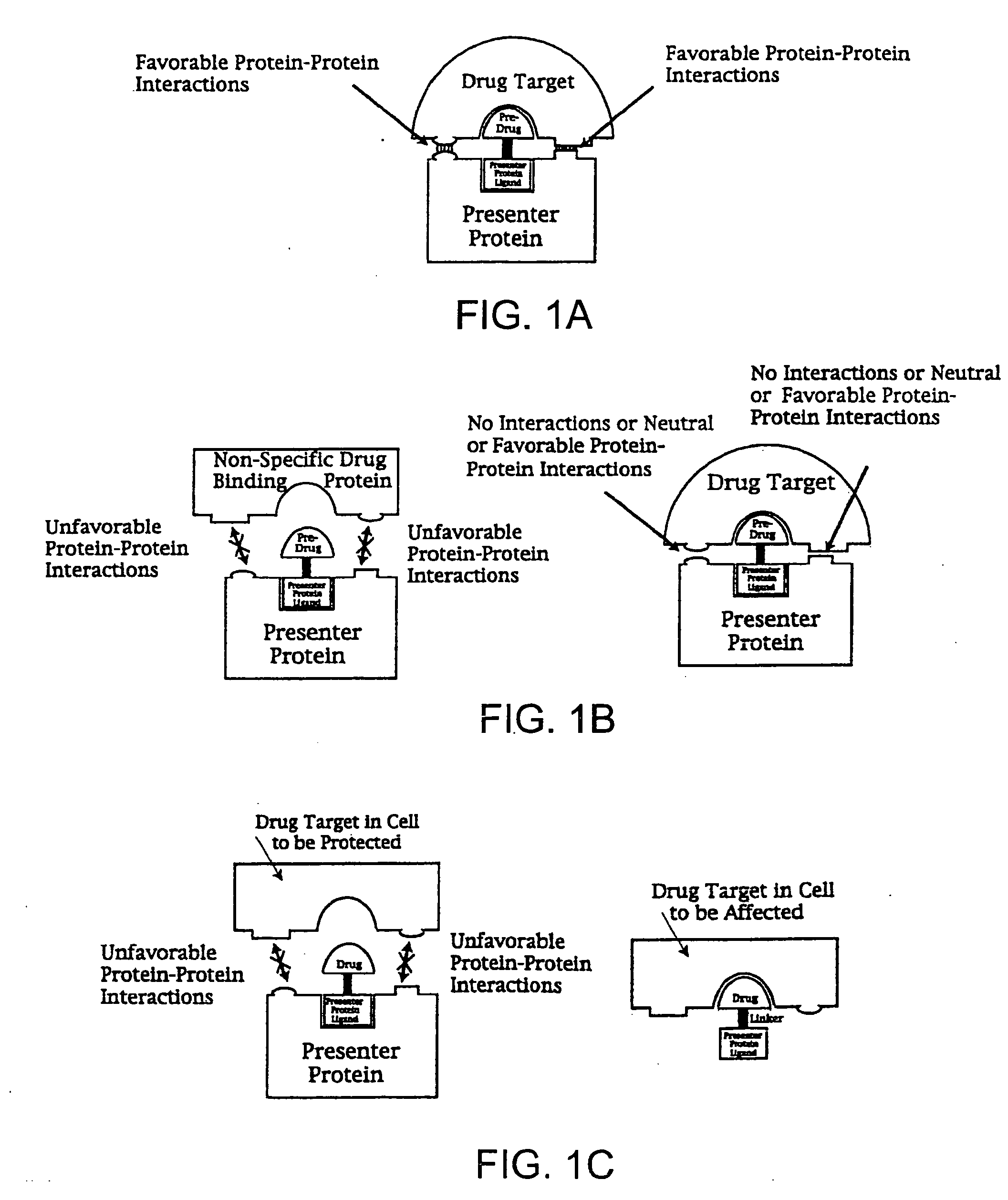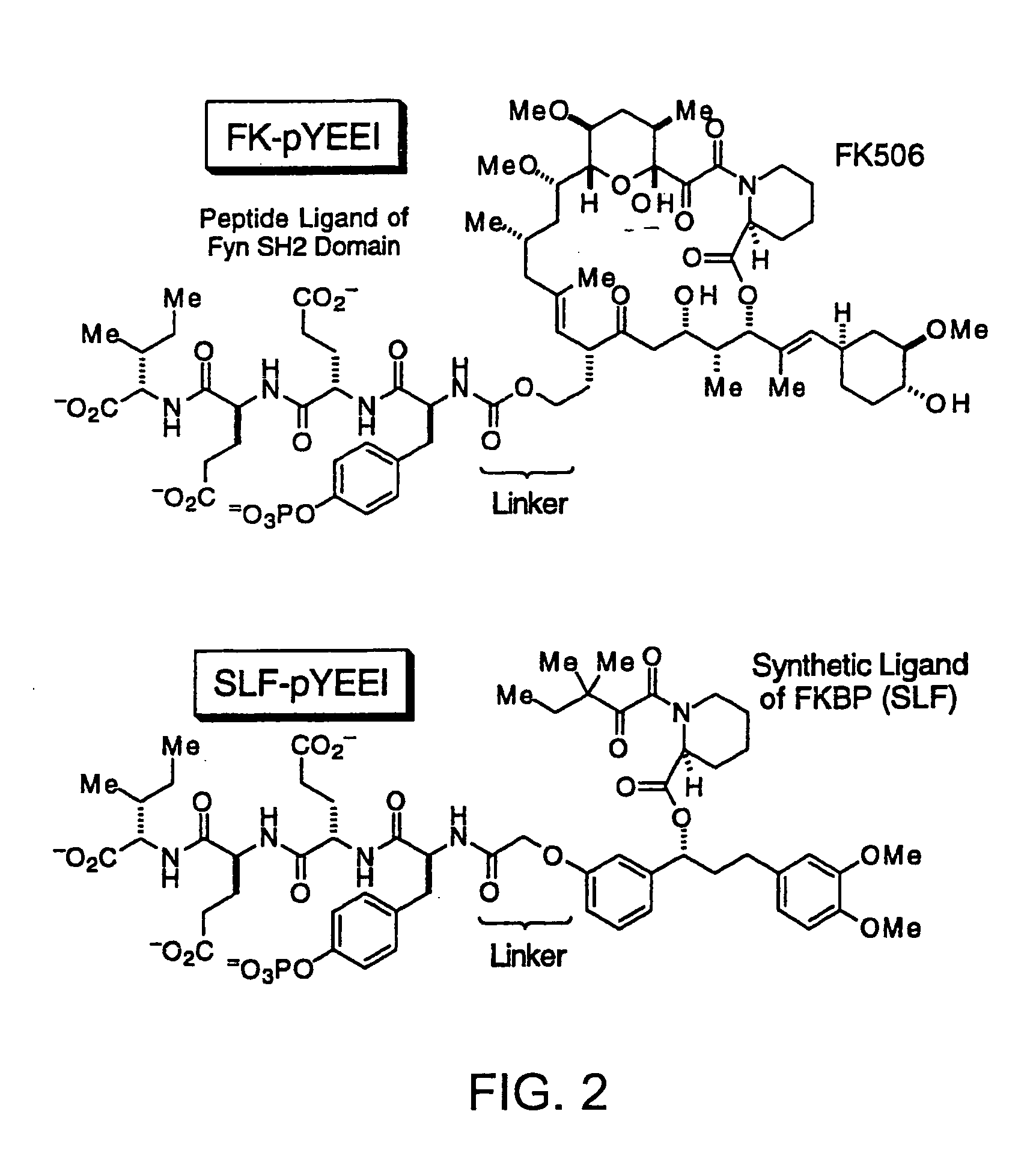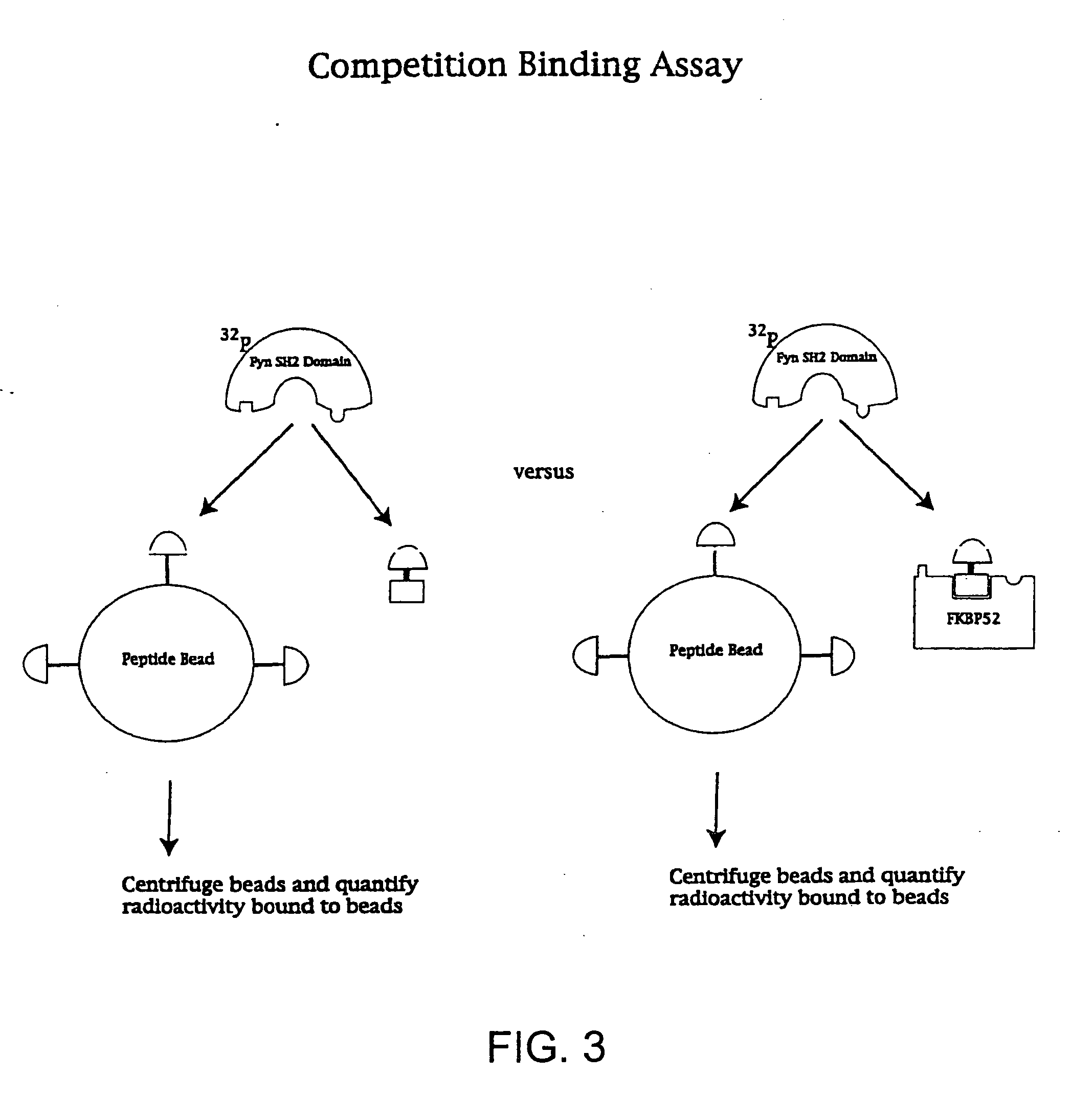Administering bifunctional molecules containing a drug moiety and presenter protein ligand for therapy
a technology of presenter protein and drug moiety, applied in the field of pharmaceuticals, can solve the problems of inability to selectively target identified compounds, and inability to find clinical use of identified ligands, and achieve the effect of increasing affinity, specificity or selectivity
- Summary
- Abstract
- Description
- Claims
- Application Information
AI Technical Summary
Benefits of technology
Problems solved by technology
Method used
Image
Examples
example i
Bifunctional Molecules of pYEEI
[0126] SH2 domains of the tyrosine kinases Fyn and Lck as well as the N-terminal SH2 domain of PLC were used to demonstrate that the affinity and specificity of a ligand that is bound by multiple proteins can be improved through the use of presenter proteins. While Fyn, Lck and PLCγ have similar biochemical properties, they are involved in different signaling processes affecting different biological endpoints. The ligand studied was a phosphotyrosine peptide with the sequence NH2-pYEEI-COOH. This peptide binds to all three SH2 domains, Fyn, Lck and PLC [Songyang et al. Cell (1993) 72, 767].
A. Bifunctional Molecule Synthesis
1. Synthesis of FKpYEEI
[0127] The pYEEI peptide was chemically linked to FK506 in order to create the bifunctional ligand, FKpYEEI (FIG. 2). The FK506 moiety can be bound by the family of FK506 binding proteins, the FKBPs, which serve as the presenter proteins in the experiments described below. The synthesis of FKpYEEI is base...
example ii
Activity of Penicillamine Para-Amino Salicylic Acid Bifunctional Molecule
[0154] To determine whether isoform specificity could be achieved by chemically linking a drug to a ligand for an extracellular protein, we synthesized compound 1 shown below in FIG. 1. Compound 1 consists of a penicillamine moiety coupled via a glycine linker to para-amino salicylic acid, a known ligand for albumin with an IC50 of 5 μm. Penicillamine is an inhibitor of the enzyme alkaline phosphatase, with IC 50 values in the μM range for a wide variety of alkaline phosphatase isoforms. We reasoned that by recruiting albumin to the alkaline phosphatase surface using the bifunctional compound 1, we could modulate the effective affinity of penicillamine for its target, alkaline phosphatase.
[0155] Reactions were conducted in 200 mM diethanolamine buffer, pH 10, with methylumbeliferal phosphate as the substrate. The reaction was monitored by recording fluorescence of the hydrolysis product (excitation at 355 nM...
example iii
Selectivity Experiment-Using Bifunctional Molecules to Detoxify Antimicrobials
A. Introduction
[0157] Many molecules that contain the 2,4-diaminopteridine bicyclic ring structure are inhibitors of dihydrofolate reductase (DHFR) and these molecules usually possess strong antimicrobial activity. However, the pteridine structure alone is not very attractive for widespread use as an anti-infective because it is a non-selective inhibitor of DHFR: it affects not only microbial DHFR but it also inhibits the human homolog. As a result, treatment of a patient with pteridines often causes side effects and toxicity. In order to reduce the ability of the pteridine nucleus to bind to human DHFR, a pteridine derivative is covalently linked to a ligand of FKBP (e.g. SLF, FK506, etc.). Based on structure-activity relationship (SAR) data, the pteridine and FKBP ligand are linked in such a way that their binding to DHFR and FKBP, respectively, are as little affected as possible.
B. Synthesis
[0158]...
PUM
| Property | Measurement | Unit |
|---|---|---|
| concentration | aaaaa | aaaaa |
| concentration | aaaaa | aaaaa |
| concentration | aaaaa | aaaaa |
Abstract
Description
Claims
Application Information
 Login to View More
Login to View More - R&D
- Intellectual Property
- Life Sciences
- Materials
- Tech Scout
- Unparalleled Data Quality
- Higher Quality Content
- 60% Fewer Hallucinations
Browse by: Latest US Patents, China's latest patents, Technical Efficacy Thesaurus, Application Domain, Technology Topic, Popular Technical Reports.
© 2025 PatSnap. All rights reserved.Legal|Privacy policy|Modern Slavery Act Transparency Statement|Sitemap|About US| Contact US: help@patsnap.com



